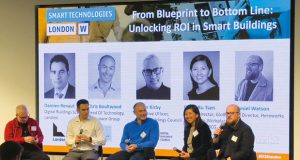Leesman’s CEO, Tim Oldman, explains what the best workplaces in the world are doing differently to everyone else and how others can adopt the same approach
At Leesman, we canvass the views of employees in order to arm businesses and organisations with the insights they need to provide both an effective working environment and an outstanding workplace experience. We do this via an online survey that looks at what employees are doing, and how well each of the activities they undertake as part of their role are supported by the physical, virtual and social infrastructures on offer. The benchmark also considers the impact that the design of a space has on an employee’s overall experience, from their perception of their productivity to the sense of community.
We believe that a truly effective working environment, one that enhances productively on both individual and collaborative activities, is one that also offers a great day at work.
Our research, based on a global database of over 4,000 workplaces across 96 countries and more than 700,000 respondents, has identified an elite group of organisations that demonstrate a strong understanding of this innate connection between environment and experience. The Leesman+ collective is driving change through new methods and an innovative use of data to create workplaces that act as an example for the rest of the world to follow.
The evolving employee experience
First and foremost, does the workplace have a positive impact on corporate image and sustainability? Corporate image is one of an organisation’s most important assets. What people think of and how they see the organisation is imperative. Not only does it impact the organisation’s draw towards potential customers, customers and collaboration partners, but it is also crucial in attracting and retaining the best talent.
The best workplaces in the world consistently offer a specific type of workplace experience—a participatory space where infrastructures are crafted, immersive and user-centric. Our own research reaffirms that. And in a time when employers are being bombarded with the latest must-have workplace strategies, this research isolates the employee signal from industry noise to reveal a non-negotiable list of employee experience components which leadership teams should ignore at their peril.
How to win the talent war
There is one simple way businesses, of all industries and sectors, can win the talent war. That’s by consistently investing in – and listening to – their primary asset: their people.
Our data shows an elite band of organisations have asked, listened and taken measures to improve their employee experience. Since 2012, Leesman has awarded the highest performing workplaces on its Index – ones that comply with strict qualification criteria – Leesman+ certification. Identifying what separates them from the rest of the pack has helped to unveil the cornerstones of great employee experience.
Crunching the survey data from the most recent Leesman+ list which comprises 28 buildings together with information on key variables external of the research including occupancy density, desk-sharing ratios, and environmental certification, has identified the key differentiators between these two groups. And the findings expose some blunt discrepancies. When it comes to personal productivity, for example, 77 per cent of respondents in the Leesman+ buildings answer affirmatively – a whole 15 percentage points higher than the global index average. On the topic of pride, meanwhile, scores soar by 29 percentage points, from 51 per cent to 80 per cent.
Delving into the factors that determine these scores reveals a great deal about how organisations can achieve exceptional employee experience. It is easy to make the argument, for example, that Leesman+ organisations have a much better sense of their employees’ increasingly mobile and flexible needs. A substantial majority of the high-performing workplaces offer either a fully flexible arrangement or a mix of flexible and designated workstations – and their occupiers are happy: a massive 86.5 per cent of respondents from the Leesman+ buildings report satisfaction with the variety of workspaces on offer.
The open plan myth
Wider variety may also help to explain why the Leesman+ workplaces are predominantly open concepts. A perfect example of this conundrum can be found in the ongoing war on open plan offices in press. The most current and common theme is that open designs distract, diminish privacy and create toxic levels of stress at work. Yet, our latest findings show that organisations which get open plan designs right do not sacrifice visual or acoustic privacy. In fact, the number of respondents who were satisfied with the quiet rooms provided by Leesman+ spaces last year climbed to 61 per cent, which represents an increase of 20 percentage points since 2015.
The common perception may be that remote working affords people the freedom to be both effective and creative away from the chaos of open plan offices, but this simply isn’t backed by the data. Leesman+ spaces contain fewer remote workers than the global average, while remote workers across Leesman’s wider database report lower levels of personal productivity than their office-based colleagues. Moreover, digital tools and better high-speed internet are still no match for face-to-face interaction in the workplace when it comes to something as critical as knowledge transfer. Office workers report six per cent higher satisfaction with their ability to share ideas with colleagues than remote workers.
There is an all-important question. Why are employees choosing to work remotely or from home, with increasing regularity? What does this actually say about the standard of today’s workplaces? Organisations have a duty to reappraise their employees’ needs ensuring they are providing the infrastructures, services and experiences to match.





